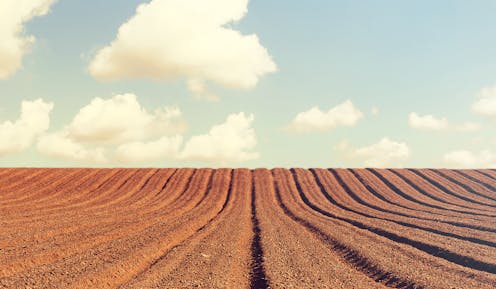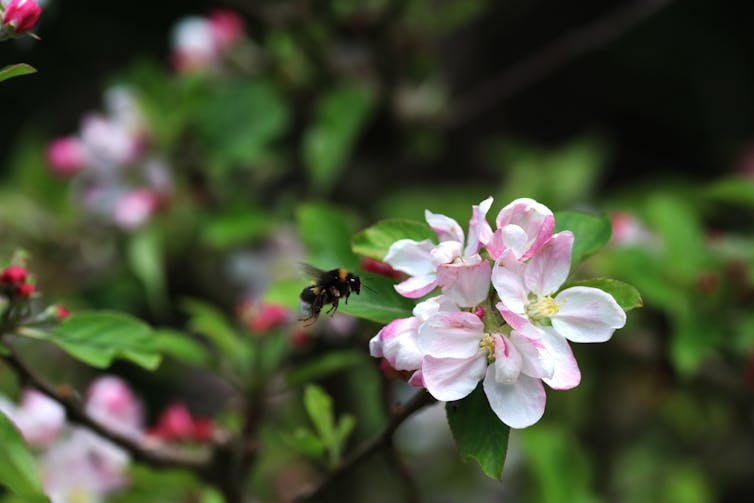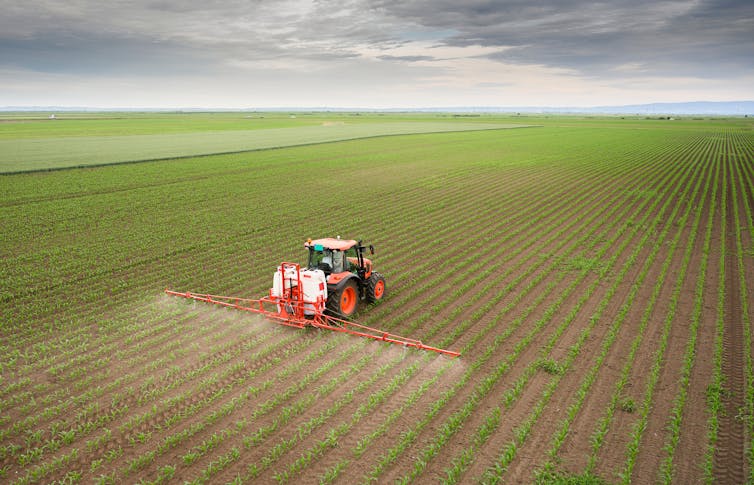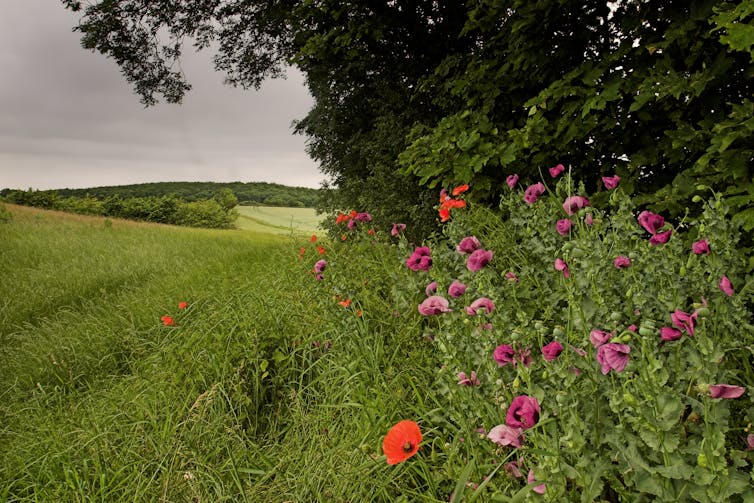
Insect populations are declining worldwide at a rate of almost 1% per year. This decline is alarming. Insects play a crucial role in pollinating crops, controlling crop pests and maintaining soil fertility.
In the UK alone, pollination provided by bees and other insects adds over £600 million to crop production every year. That’s about 10% of the country’s total annual crop value.
Through pollination, insects also make sure that fruit and vegetables are packed full of the vitamins and minerals needed for healthy human diets. Insufficient pollination would result in lower-quality foods, less choice and higher food prices.
The decline of pollinating insects is already affecting crop yields in the UK. Research on 20 UK apple orchards found that a lack of pollination led to average yield deficits (where the maximum potential output of these orchards was not reached) of up to 22%.
The issue extends beyond the UK’s borders. The UK imports a substantial proportion of fresh produce from regions such as Europe, north Africa, South America and Asia. So the global decline of pollinating insects also poses a huge threat to food security in the UK.
Just like fertiliser and water, these insects should be considered a legitimate agricultural input that needs to be protected and managed sustainably. There are effective methods available to restore beneficial insects to farmland, such as planting hedgerows and using pesticides sparingly, and farming practices are gradually changing. However, the implementation of these methods in the UK falls short of what is required to ensure the country’s food and nutritional security.

Pollinators are under siege
The main threats to pollinators globally are changes in what land is used for and how it is managed. As a result of the shift to modern industrialised farming, flower meadows and hedgerows have been replaced by monocultures and increasingly large fields. Consequently, the diversity of food sources available to pollinators has decreased and farmed landscapes have generally become less hospitable habitats for insects.
The excessive use of chemical pesticides and the impacts of climate change have made matters even worse. Rising temperatures are creating a mismatch between crop flowering times and when pollinators emerge. Bumblebees, for example, which are vital pollinators for crops both in the UK and globally, are struggling to shift their range in response to Europe’s warming climate.
Together, these factors are driving losses in the abundance and diversity of pollinator species. Modelling studies have revealed around a 25% drop in the number of bee and hoverfly species observed within any 10km area of the UK compared to the 1980s.
And yet, the UK’s reliance on pollinating insects is likely to increase in the future.
Factors including climate change, technological advancements, shifting market demands and policies promoting sustainable food security mean new and underutilised crops such as soy, sunflowers and apricots are likely to be grown in the UK within the coming decades. Many of these crops benefit from insect pollination.

Restoring insects to farms
Thankfully, there has been a notable shift in farming practices in recent decades towards reducing fertiliser, herbicide and pesticide use and restoring insect habitats. One approach is integrated pest management. This is a strategy for sustainable crop pest control that is based on using pesticides only when they are absolutely necessary.
The strategy was developed in response to steadily increasing pesticide use, which caused environmental damage and pesticide resistance. Farmers using integrated pest management are encouraged to prioritise the protection of natural predators such as wasps and spiders, which can help control pests effectively.
By reducing reliance on pesticides, integrated pest management also helps to protect pollinators. Research shows that bumblebees exposed to neonicotinoid pesticides (a widely used class of pesticide), for example, visited fewer flowers on apple trees and collected pollen less often.
In the UK, farmers are now incentivised to adopt environmentally sustainable practices through the environmental land management scheme. This scheme, which was fully launched in 2023, pays farmers to undertake activities that protect and enhance the natural landscape. These activities include planting hedgerows and flower strips along field boundaries, or creating woodlands.
Research demonstrates that expanding natural habitats in the UK’s productive arable farmland can boost pollinating insect populations. And, despite taking a portion of land out of productive agriculture, this approach did not reduce harvests.

Another option is agroforestry, where tree planting is deliberately combined with agriculture. This approach diversifies the farmed landscape and has been found to support twice as many pollinators as conventional cropping systems. In the case of apple pollination, these systems can even provide up to four and a half times more pollination.
But to fully amplify the benefits of agroforestry for pollinators, the UK needs to meet its national tree planting targets of 30,000 hectares per year by 2030. The current rate of tree planting falls significantly short of this target. Between 2018 and 2022, only 13,000 hectares were planted per year in the UK.
Over the past century, farming practices have contributed to insect declines. Supporting farmers to provide high-quality habitats for insects will not only help to slow down – or even reverse – insect decline, but will help to secure the UK’s food security.

Don’t have time to read about climate change as much as you’d like?
Get a weekly roundup in your inbox instead. Every Wednesday, The Conversation’s environment editor writes Imagine, a short email that goes a little deeper into just one climate issue. Join the 20,000+ readers who’ve subscribed so far.
Simon Potts receives funding from UKRI, NERC, BBSRC, EU, GCRF, Defra, NE, FAO, IUCN, Friends of the Earth, Waitrose, Sainsburys, BerryWorld, Syngenta, Avalon and Worldwide Fruit Limited.
Michael Garratt receives funding from UKRI, NERC, BBSRC, EU, GCRF, Defra, Reserach Council of Norway, AHDB, UK Gov Green Recovery Challenge Fund, Newton fund, Syngenta, BerryWorld, Avalon and WWF Limited.
Tom Breeze works for the European Union as a consultant. He has received funding from the European Union and UK Research and Innovation (BBSRC, NERC and ESRC).
This article was originally published on The Conversation. Read the original article.







